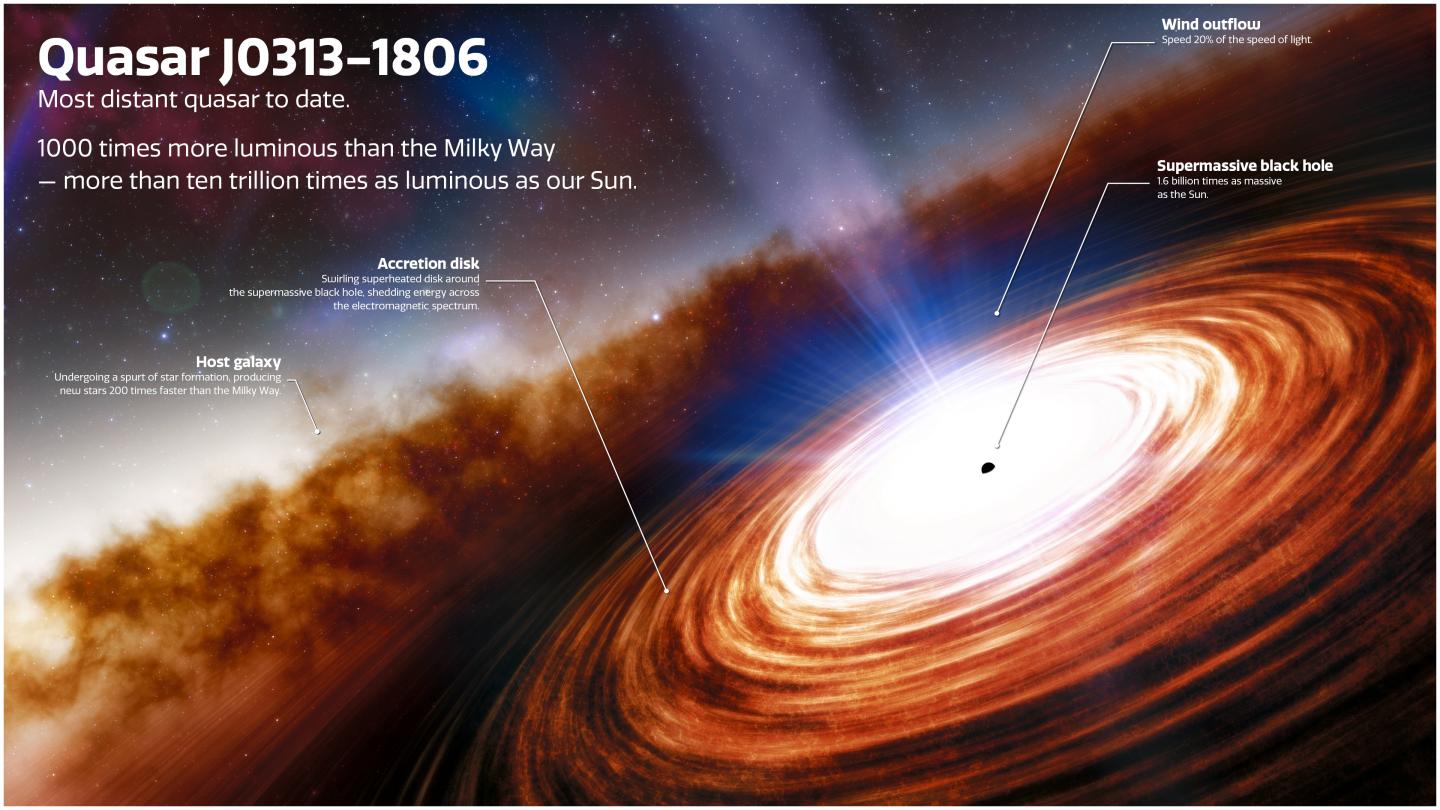Premature birth? The most distant quasar raises questions
Astronomers have discovered the most distant quasar yet. The monstrous celestial object called J0313-1806, which existed 670 million years after the Big Bang, shines thousands of times brighter than the Milky Way and is powered by another extreme, the earliest supermassive black hole, more than 1.6 billion times the mass of the Sun. This fully formed distant quasar with a redshift of z = 7.64, formed more than 13 billion years ago, is also the earliest quasar discovered to date, giving astronomers a glimpse of how massive galaxies formed in the early universe.
Quasars, powered by the feeding orgies of colossal black holes, are the most energetic objects in the universe. They form when gas in the superheated accretion disk around a supermassive black hole is inexorably pulled inward, emitting light across the electromagnetic spectrum. The amount of energy emitted by quasars is enormous, with the most massive examples dwarfing entire galaxies. The study collates data from several observatories.
Although J0313-1806 is only 20 million light-years farther away than the previous record holder, the new quasar contains a supermassive black hole twice as heavy. This represents a significant advance for cosmology, providing important insights into the formation of black holes in the early universe. For quasars, which already accumulated millions if not billions of solar masses in their black holes at a time when the universe was very young, pose a challenge to scientists. How could they have formed when they had little time to do so?
A generally accepted explanation for the formation of black holes is that a star explodes as a supernova at the end of its life and collapses into a black hole. When such black holes merge over time, they can – theoretically – grow into supermassive black holes. But much like it would take many lifetimes to build up a retirement annuity by putting in a euro every year, quasars in the early universe are a bit like infant millionaires; they must have acquired their mass in other ways.
The newly discovered quasar provides decision criteria for this by ruling out two current models of how supermassive black holes form on such short timescales. In the first model, massive stars composed largely of hydrogen form the first generation of stars in a young galaxy, and thus the food for the nascent black hole. The second model assumes dense star clusters that collapse into a massive black hole at the very beginning.
Quasar J0313-1806, however, has a black hole that is too heavy to be explained by either of the above scenarios, according to the team that discovered it. The team calculated that if the black hole at its center had formed as early as 100 million years after the Big Bang and grown as fast as it did, it would still have weighed at least 10,000 solar masses when it began.
“This reveals that the seed of this black hole must have been formed by a different mechanism,” says co-author Xiaohui Fan. “In this case, one in which huge amounts of primordial cold hydrogen gas collapse directly into a black hole.” Because this mechanism does not require full-fledged stars as raw material, it is the only one that would allow the supermassive black hole of quasar J0313-1806 to grow to 1.6 billion solar masses at such an early time in the universe. That’s what makes the new record-breaking quasar so valuable, Fan explains.
